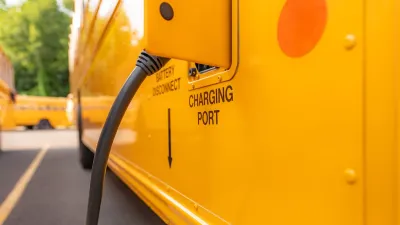Using more recycled materials could dramatically reduce carbon emissions and waste from construction projects.

A new report assesses how the construction industry can cut its carbon emissions, which make up 11 percent of energy-related emissions globally, through a practice sometimes known as circularity, reports Helen Chandler-Wilde in Bloomberg CityLab.
The report claims that the industry could reduce emissions by almost 60 percent by using more recycled and reclaimed materials. In the United Kingdom, legislation passed earlier this year requires “commercial landlords to meet minimum energy efficiency standards to rent out property.”
The report includes details on construction waste and emissions generated in several global cities. “It concluded some 77 million tonnes of waste could be kept in the supply loop over the next decade if construction firms reused materials, worth £10.6 billion. New York has the greatest potential, with 30.6 million tonnes that could be kept in construction, worth £2.8 billion.”
FULL STORY: When Recycling Comes to the Construction Industry

Alabama: Trump Terminates Settlements for Black Communities Harmed By Raw Sewage
Trump deemed the landmark civil rights agreement “illegal DEI and environmental justice policy.”

Planetizen Federal Action Tracker
A weekly monitor of how Trump’s orders and actions are impacting planners and planning in America.

Why Should We Subsidize Public Transportation?
Many public transit agencies face financial stress due to rising costs, declining fare revenue, and declining subsidies. Transit advocates must provide a strong business case for increasing public transit funding.

Understanding Road Diets
An explainer from Momentum highlights the advantages of reducing vehicle lanes in favor of more bike, transit, and pedestrian infrastructure.

New California Law Regulates Warehouse Pollution
A new law tightens building and emissions regulations for large distribution warehouses to mitigate air pollution and traffic in surrounding communities.

Phoenix Announces Opening Date for Light Rail Extension
The South Central extension will connect South Phoenix to downtown and other major hubs starting on June 7.
Urban Design for Planners 1: Software Tools
This six-course series explores essential urban design concepts using open source software and equips planners with the tools they need to participate fully in the urban design process.
Planning for Universal Design
Learn the tools for implementing Universal Design in planning regulations.
Caltrans
Smith Gee Studio
Institute for Housing and Urban Development Studies (IHS)
City of Grandview
Harvard GSD Executive Education
Toledo-Lucas County Plan Commissions
Salt Lake City
NYU Wagner Graduate School of Public Service





























